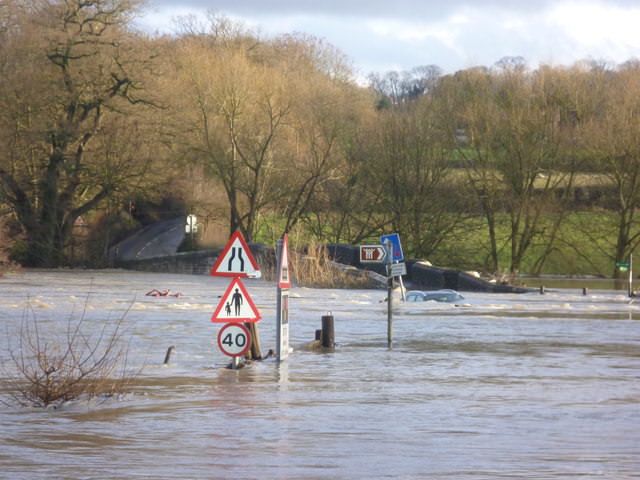New Research Aims to Protect Communities at Risk from Flooding
Published on by Water Network Research, Official research team of The Water Network in Academic
An innovative £1.2m project led by The University of Manchester aims to demonstrate that landscape restoration could be a low-cost way to reduce the risk of flash flooding in rural communities near steep upland streams and rivers.

Researchers from the university’s Geography department are working with project partners Moors for the Future Partnership, and colleagues at University of Leeds, Durham University and Greater Manchester, Merseyside and Cheshire Environment Agency to understand how natural flood management methods might help to protect 22 at-risk communities in the Peak District, along the western fringe of the Pennines.
Vulnerable rural communities are often small and spread out, and rarely justify expensive traditional flood defences. Previous investigations carried out by the researchers have shown that upland restoration can have a substantial impact on the flow of water during storms.
Reintroducing vegetation to bare soils and damming up erosional channels increases the roughness of the land’s surface and slows the flow of water entering streams - this delays the release of water from the uplands and reduces peak stream flow during storms, alleviating the chance of flooding downstream.
The project aims to improve our understanding of how to dam up erosional channels (gullies), assess the impact of restoring Sphagnum moss cover on moorlands, and determine how newly-planted upland woodlands affect storm flow.
It will also assess the longer-term evolution of woodland and gully blocking approaches - this is important, as investment in natural flood management requires confidence in the long-term impact of restoration and maintenance of the interventions.
It will develop user-friendly computer simulations to assess possible interventions, and will work with partners (Environment Agency, Natural Resources Wales, Scottish Environmental Protection Agency, International Union the Conservation for Nature) to investigate how the project’s findings can be applied to elsewhere in the UK.
Read full article: The University of Manchester
Media
Taxonomy
- Disaster Prevention
- Disaster Risk Reduction
- River Studies
- River Basin management
- Flood management
- Flood prediction
- River Engineering
- Flood Risk Management
- Flood Mapping
4 Comments
-
From a very different climate, but contains useful information regarding successful stormwater management, flood mitigation, and habitat restoration techniques used in the arid southwest US (New Mexico).
http://streamdynamics.us/
-
Wouhaou
Fortunately, this university has had this idea, when we know that farmers have been applying this principle forever. Except that in times of drought, all this poorly maintained biodiversity will be dead and at the time of the floods will be useless.
-
No mention of the most obvious measure - contour ploughing?
-
Landscaping does hold the soil and moisture longer. But if this project is really serious begin by following natures rules. Then all of the UK can be flood protected for the 1.2MM pounds. 1. Must disallow all chemicals for the soils. This kills the microbes that help plants grow and builds their immune system.2. Plant as many tap root trees as possible. They go deeper and hold the soil in place. 3. The planting of a tall species of tree will be able to drink up to 300 gallons of water a day. They will accelerate their respiration and continue maximum drinking until the flood waters go down. Suggest all river banks, lakes, and sea shore lines. You may want to start a city or county composting operation. Clean up the environment and feed the soil for free.